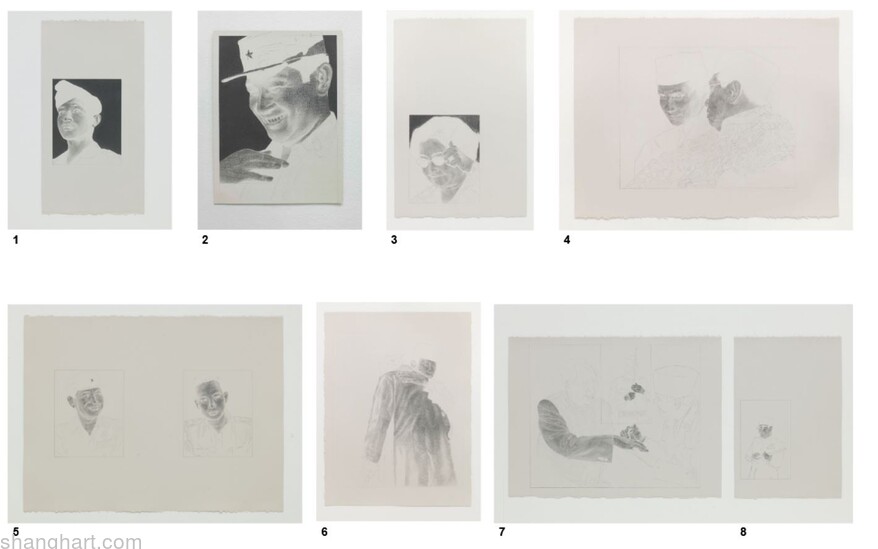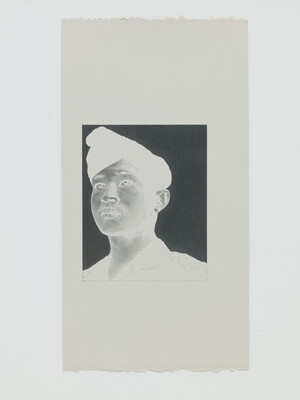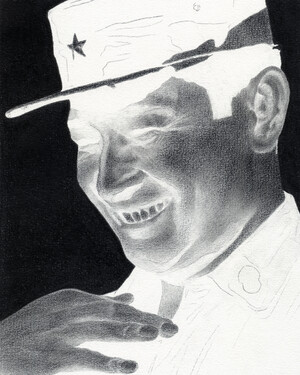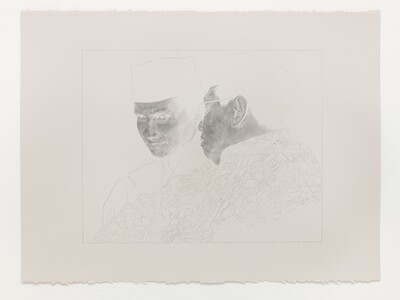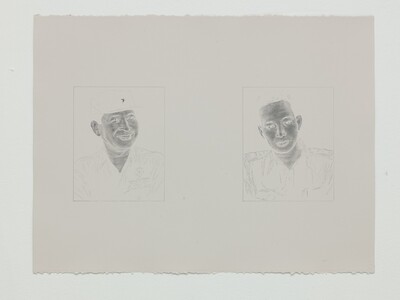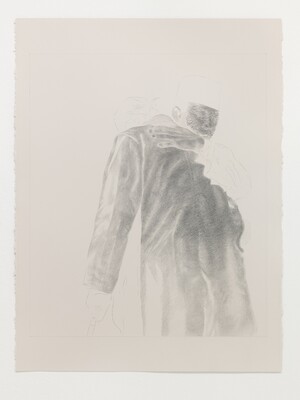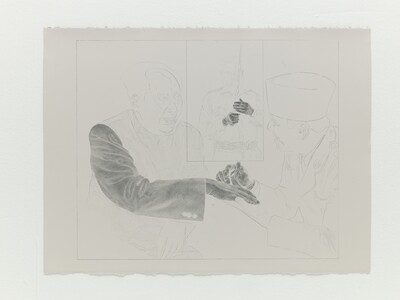This set of drawings looks at photographic images and their impact in our remembering and re-forming of personal narratives. Having left his hometown at a young age, the artist’s perception of his former country is mostly through images and the imagined. Imaginary Homeland looks ontologically at photography’s methods, connecting them with ideas of embodiment, gaze and memory.
The process started with the artist drawing negative images of press photographs of Indonesian politics in pre-Soeharto (1945-1968) and post-Soeharto (1998-present) periods - bookends to the New Order Era. Political leaders of that era figured in the drawings: Sukarno, and when he met with Mao Zedong and Fidel Castro, Suharto, Megawati, Amin Rais and Gus Dur were then put through analogue photography studio processes as well as digital manipulation, to produce a body of images that differed from their original meanings. He also made peci* pinhole negatives from online photographs of Indonesia’s first president Sukarno in political rallies.
The viewer is invited to use her mobile device, with invert settings turned on, to see the positive image. Shifting between the modality of drawing and photography, the artist reflects viscerally upon the imagery of his personal history, seeking agency.
The Chinese titles of the works were drawn from lyrics of 1980s Mandopop-songs. About heartbreak and its melodrama, the songs were popular selections in karaoke clubs which the artist visited growing up.
*Peci is a headwear commonly worn by Javanese men; it is also a symbol for the Indonesian national identity, popularised by Indonesia’s founding president Sukarno.
Detail pictures:

